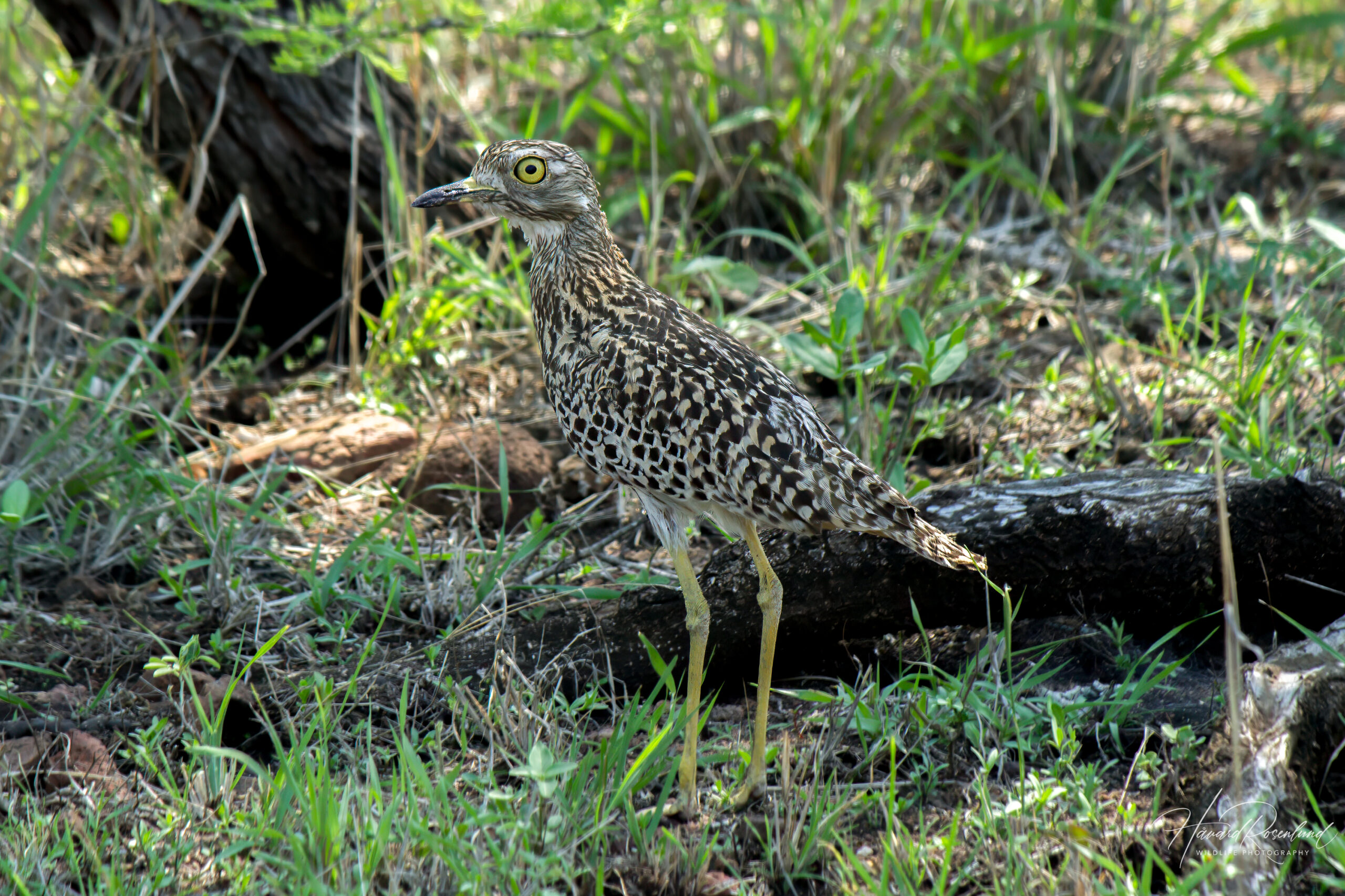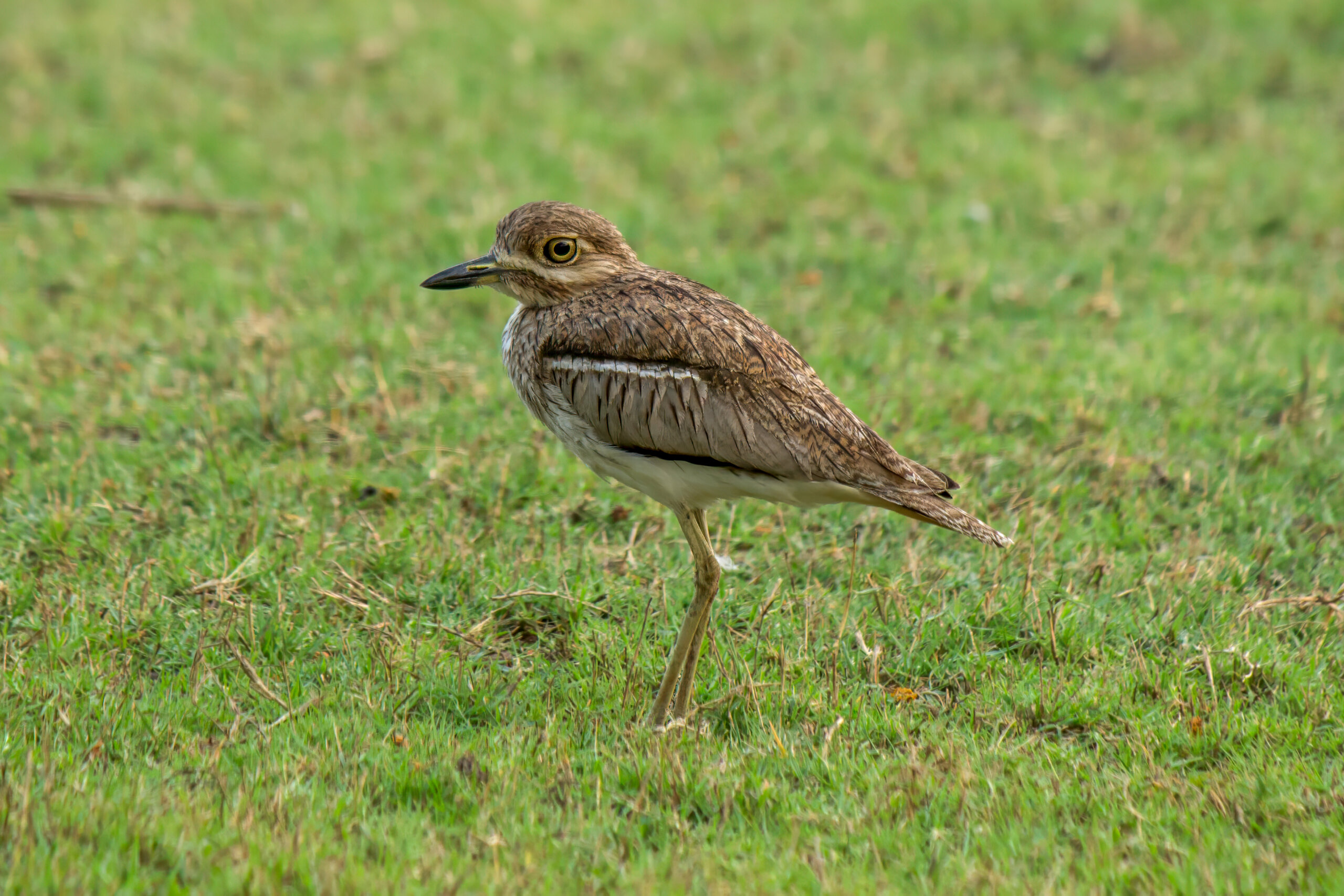Description
The spotted thick-knee (Burhinus capensis), also known as Cape thick-knee or spotted dikkop, is a distinctive wader native to much of sub-Saharan Africa. This species reaches lengths of 40-45 cm (15.7-17.7 in). It has notable large yellow eyes, which are an adaptation to its nocturnal lifestyle. The bird’s plumage is predominantly light brown with black speckles, aiding in camouflage within its environment. It is the only thick-knee with a speckled plumage in Africa, making it easy to separate from other species. The legs are long and yellow, and with an enlarged knee-joint, which as given the birds of this family their name.
Diet & habitat
Spotted thick-knees are found across various habitats, including dry, open fields, farmlands, and savannas. They have adapted to urban environments as well, often seen in parks and large gardens. Their diet mainly consists of insects such as beetles and crickets, but they also consume small mammals, reptiles, and seeds. Their feeding behavior is nocturnal and crepuscular, using their large eyes to locate prey in low-light conditions.
Nesting
The breeding season of the spotted thick-knee varies geographically, typically aligning with the rainy season. These birds are monogamous with a strong pair bond. Their nests are simple ground scrapes, often concealed under bushes or grass clumps. The female usually lays 1-2 eggs, and both parents share incubation duties, which last about 24-29 days. Chicks are precocial and are able to leave the nest soon after hatching, with fledging occurring approximately 40 days later.
Status
The spotted thick-knee benefits from a wide range and its adaptability to various habitats, including urban areas. It is not threatened and it is classified as least concern on the IUCN Red List.







